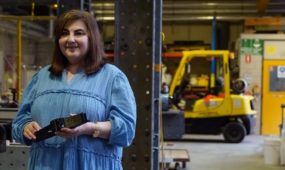
Sign up to receive notifications about new stories in this category.
Thank you for subscribing to story notifications.
It seems too distant to focus on. We don’t yet know what source of power will drive our appliances, which industries will employ and support our communities, what kinds of technologies we will use.
But John O’Brien, the managing director at Australian CleanTech, says we can confidently shape our future world by concentrating on clean technologies, or cleantech, right now.
Globally, clean technologies represent growth activity, and there are very good investments to be made
“We define cleantech as economically viable products, services and processes that harness renewable materials and energy sources, dramatically reduce the use of natural resources and cut or eliminate emissions and wastes,” says O’Brien. “But really, nearly every new and successful technology is a clean technology.”
Operating across Australia, Korea and China, Australian CleanTech – and its affiliate Sino CleanTech – works with technologies, investors and governments to incorporate the industries of the future.
“We work with technology companies, helping them grow and raise finance, and to develop strategy for going into international markets,” says O’Brien.
“We also work with investors looking for opportunities in Australia. In this capacity we’ve been involved in wind farms, solar farms, water technology and battery technologies,” he said.
There is a strong global interest in Australian technologies, particularly from China and Korea.
“Globally, clean technologies represent growth activity, and there are very good investments to be made,” explains O’Brien.
“Australia is seen as being politically stable, as a good place to put your money.”
Sean Keenihan, the vice president of the Australia China Business Council, says business relationships between Australia and China can support the growth of cleantech.
“Australian technology companies require markets and investment to grow output and establish pathways to commercialisation,” he says.
“China is seeking to both attract and foster world-class talent and according to its political leaders aims to nurture ‘the huge potentials of science and technology as the primary force of productivity.’ ”
“The timely alignment of China’s appetite for tech-driven productivity growth with the global aspirations of Australian technology companies behooves Australia to be more proactive in establishing stronger technology sector ties with China,” says Keenihan.
Beyond driving the development of new technologies in Australasia, John O’Brien sees a role for technology and futures thinking in assisting communities to look forward with confidence.
To that end, and with the 2015 Paris World Climate Conference approaching, he is preparing a book entitled Stories From Our Low Carbon Future.
“My view is that we need to create an image of the future to pull people along, to make them attracted towards it,” says O’Brien.
“This book consists of present-tense impressions of the year 2100 from seventy of the world’s top thinkers and influencers,” he says, adding that which one of the visions we actually end up reaching is up to us.
O’Brien shared excerpts from the manuscript at TEDxFlindersUniversity in Adelaide, South Australia last month.
An optimistic contribution by Christiana Figueres, the executive secretary of the United Nations Framework Convention on Climate Change (UNFCCC), has us harnessing renewable energy in 2100:
This move to solar and wind energy was enabled by technology that drove demand – electric vehicles, energy independent buildings, intelligent micro-grids, improved electricity storage, smart agriculture and highly efficient transport systems.
Financing these advances sparked a virtuous cycle of ingenuity and innovation, resulting in global development that kept people and planet healthy and the economy prosperous even as the population surged past 9 billion.
A new century presents new opportunity and because governments enacted climate-safe development that will serve for generations, opportunity from 2100 forward is unimaginably vast and incredibly varied.
Other international contributors include Mary Robinson (UN Special Envoy on Climate Change, and ex-President of Ireland), Tessa Tennant (Director, UK Green Bank) and Bill McKibbin from 350.org.
Australians are also contributing to the book, such as Chief Scientist Professor Ian Chubb, Nobel Prize winner Professor Peter Doherty and Adelaide futurist Dr Kristin Alford.
“If you create stories of opportunities, of success, then governments and indeed people in general have something to follow,” says O’Brien.
Jump to next article



